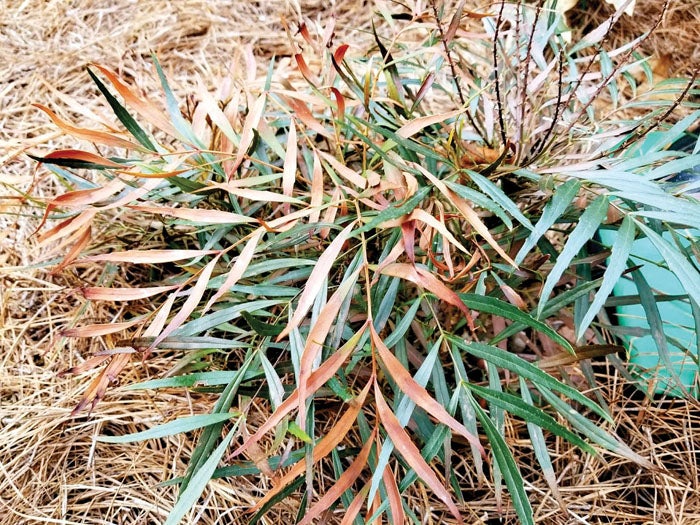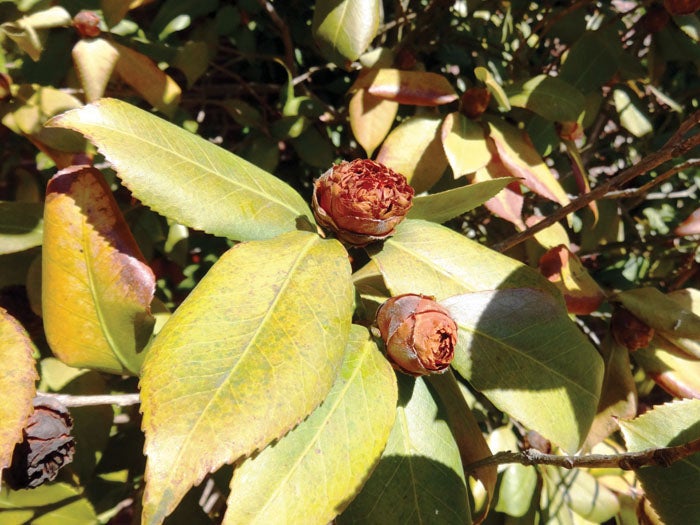Darrell Blackwelder: Unseasonably warm temperatures in the winter can be detrimental to plants
Published 12:00 am Saturday, January 8, 2022

- Cold damage on mahonia
Ice and snow are usually a major topic of discussion in January, however, unseasonably warm weather earlier in December has many gardeners concerned about the negative effect on plant growth with upcoming winter weather. Warm weather out of season has its benefits; however, in horticulture it may spell disaster.
Unseasonably warm temperatures in the winter can cause problems with tree fruit cultivars. Fruit trees, especially peach and apple, need a certain number of cold hours to initiate bloom set. Many peach cultivars need between 700-800 hours of temperatures below 45 degrees to properly break dormancy. The leaf buds need even more chilling hours, closer to 1,000 hours. Unseasonably warm weather can cause premature bloom and few leaves.
Warm weather during winter or early spring can also be a detriment to landscape plant material. Plant materials are often damaged when unseasonably warm weather stimulates the new, tender growth. It’s inevitable that Rowan County will experience cold weather during the winter months. Variable weather patterns do more than confuse plants; sudden cold snaps can be very damaging to tender foliage, especially on newly planted trees and shrubs.
Cold injury symptoms on plant materials are manifested as blackening or browning of certain areas of the plant. Damage is not always immediate and it typically doesn’t appear until a week or more after the cold weather has occurred. In some instances, such as cold damage on azaleas, cold damage may not be evident until late spring or early summer. Small limbs or twigs often have lateral splits causing the plant to have splotches of dead foliage.
What do we do to protect our plants from cold damage? Trees and shrubs can be protected from winter damage with an application of organic mulch. Now is a good time to apply mulch. Six to eight inches of coarse wood chips, bark or pine straw over the root zone helps retain soil moisture also maintains a constant soil temperature around the root system.
Avoid late fertilization in late summer. Nutrients may entice new growth in the fall into winter only to be killed later.
The best scenario for both home owners and growers is a gradual cooling trend with a return to normal winter temperatures. Hopefully this will be in our upcoming winter/spring forecast.
Darrell Blackwelder is the retired horticulture agent and director with the North Carolina Cooperative Extension Service in Rowan County. Contact him at deblackw@ncsu.edu .





